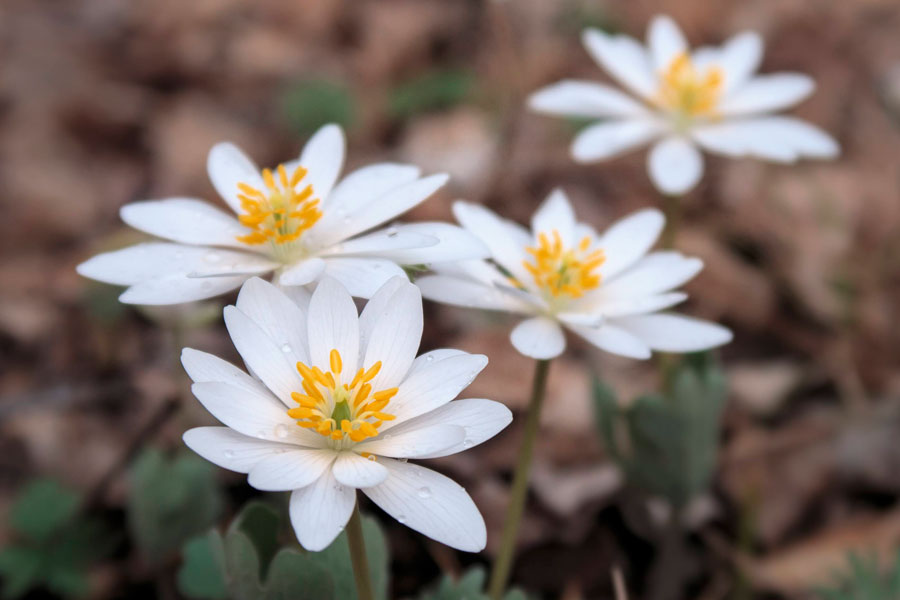
Conservation Corner
By Dan Zarlenga, Missouri Department of Conservation
Photo: Bloodroot flowers are some of the very first blossoms you’ll see as winter begins to fade. Photo by Dan Zarlenga.
You might not be able to get blood from a turnip, but you can get it from a flower.
Take a walk through your local woodland starting as early as mid-March. The air may still be cool. Keep your eyes fixed toward the ground. You’ll see a complex assortment of textures and shapes, but mostly one color—brown. Just when you think it’s too early to see any sign of spring though, you might. A small, white speck catches your eye, perhaps hidden behind a downed log or branch. You’ve found bloodroot!
Bloodroot is amazing for being one of the very first of the ephemeral wildflowers to emerge from the forest floor. It’s a sure sign winter is giving way and spring is at our seasonal doorstep. Despite its off-putting name, bloodroot is quite a charming and attractive little flower.
The bloodroot plant itself is stemless and consists of a fleshy, horizontal, fingerlike tuber. The tuber sends up a flower stalk about nine inches high, wrapped by a single grayish-green leaf. The leaf unfurls to reveal a delicate, white flower inside. The flower grows to 11/4 inch across, sporting 8–16 white petals of uneven size and length. Because the petals are of uneven length, it’s possible to see “square” flowers.
Look inside a bit closer and you’ll notice a somewhat conically-shaped green pistil in the center, flanked by an array of yellow stamens like a tiny burst of golden fireworks. Don’t waste any time admiring them however, because each bloodroot flower lasts only one or two days. They are the true meaning of ephemeral!
Much like Dutchman’s breeches, which blooms on its coattails, bloodroot is also propagated by ants. The frenetic insects are attracted to bloodroot seeds which feature a fleshy organ called a elaisome. The ants find this quite tasty and make a point of seeking the seeds out and bringing them to their nests. Once deposited there, the debris from the nests helps the seeds to grow. The leaves of bloodroot are bitter and toxic however, so most other animals do not find them appealing. Bloodroot often disappoints pollinating insects too since it offers no nectar reward for their efforts.
So, what’s the deal with the name? It turns out that that if you break open one of the roots of the plant, a blood-red sap emerges. This sap was popular with Native Americans to utilize as a natural red dye. They had a diversity of uses for the coloring, like mixing it with animal fats for face paint, dying clothing and leather, or decorating baskets.
If you’ve had enough of winter and you’re ready for an early sign of the new season, why not see if you can find some tiny bloodroot flowers in a nearby forest or woodland. These blossoms truly are the bleeding edge of spring!
For more information visit www.mdc.mo.gov.


